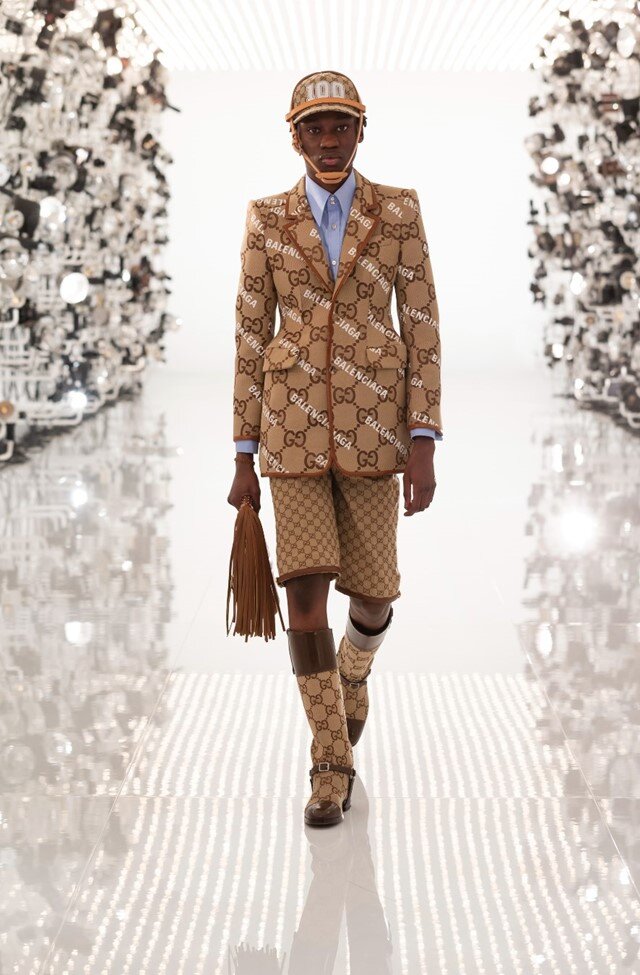Gucciaga
Last week, Gucci threw a party to which everyone was invited. It was the maison’s 100th anniversary, and Alessandro Michele brought back the house’s greatest hits to celebrate, paying homage to previous creative directors like Frida Giannini and Tom Ford, credited with bringing Gucci’s ‘sexy back’. It was the place to be, and the show also served as an opportunity for Gucci to demonstrate their work with Balenciaga. In a press release from the house, Michele made it clear that this was not a collaboration between the two brands but rather a kind of ‘hacking’ of Demna Gvasalia’s bold designs and attitude on the runway. An intermixing of styles, this collection spoke volumes about Gucci heritage, Balenciaga style and pop culture phenomena.
Michele picked a series of songs featuring the word ‘Gucci’ to accompany the collection, highlighting the house’s close connection to pop culture and their influence over each other. With around 22,705 tracks to choose from, he selected the most popular songs of recent years, including Lil Pump’s Gucci Gang (2017), Rick Ross’ Green Gucci Suit (2018), and Bhad Bhabie’s Gucci Flip Flops (2018).
References to the house’s rich heritage were scattered throughout the collection; garments and accessories from the ‘Savoy Club’ hinted towards founder Guccio Gucci’s stint working at London’s Savoy Hotel in his childhood, while the recurring motif of the house jockey similarly referenced England, in a subtler nod to Guccio’s preoccupation with horse-racing and its role in the house’s history. Elsewhere, garments from previous collections showcased the house’s design history, with creative directors Tom Ford and Frida Giannini well-represented. Frida’s legacy towards Gucci’s accessory line could be seen in the appearance of hard necklaces and an assortment of bags on the runway, while the show particularly referenced Tom Ford’s disco-inspired collections via sequins and glitter. Having revolutionised the brand during his time as creative director, it made sense for this collection to pay homage to Ford and his work at the helm.
Michele’s tailoring made use of suit waists and boxy silhouettes that are deeply connected to Balenciaga’s design staples. While patterns and accessories explicitly referenced Gucci, much of Michele’s tailoring had been modified and exaggerated in line with key elements of the Balenciaga vision, with sucked-in waists and sharply defined edges. Gucci complimented this ‘hacking’ by showcasing its versatility on the runway, with the Savoy cap, for instance, manipulated into a bag. Elsewhere, other accessories referenced pop culture, with sparkling heart-shaped clutches serving as a potential nod towards music artists Harry Styles or Lil Kim.
This collection was genderless, and continued Michele’s tradition of using androgynous models on the runway. Progressive long before other brands followed its example, Gucci has an open policy which invites all different types of people to join in its marketing campaigns.
A beautiful tribute to 100 years of house history, this was an immensely enjoyable and successful collection which delighted viewers in its clever ‘hacking’ of Balenciaga’s forms. It is no surprise that consumers and fashion critics alike hope that the house will carry out more collaborations in future and continue to develop sophisticated and beautifully tailored designs.

